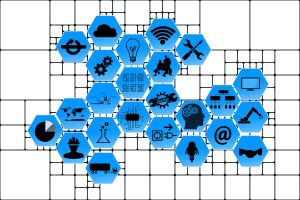
1. Retailers will invest in modern commerce platforms, boosting customer loyalty
Kelly points to Forrester Research which suggests 22% of software decision-makers who aren’t already deploying commerce platforms via software-as-a-service plan to do so in the next year. Increasingly marketing teams are on board with improving digital commerce capabilities too. Agile software based on the principles of MACH (Microservices-based, API-first, Cloud-native and Headless) commerce will grant frontend developers greater flexibility. Investing in such platforms will allow teams to test and roll-out new commerce features to improve the user experience. This will boost customer satisfaction and competitive differentiation.
2. Hype around marketplaces will cool as brands embrace D2C
While marketplaces can work for large organisations who may benefit, not all branded products lend themselves well to this channel. When a retailer lists products on a marketplace, they can lose control over the experience, fulfilment and more. In the next 12 months, individual brands will likely envision how it makes sense for them to sell products D2C. so that they can own the message, curate the experience and cut out middlemen and their costs.

3. More retailers will do tech transformations on their own
With COVID-19 driving digital transformation, retailers were forced to digitise to adapt to rapidly changing circumstances. One way they could do so was to invest in tech talent so that they could do more work internally. Furthermore, become more agile and more self-reliant in order to be in control over how technology is a competitive differentiator.
4. Headless commerce will be easier to consume
The maturation of headless commerce platforms will lower the barriers to entry for this software. This evolution will make it easier for less technically savvy employees to understand its potential and make the investment. This will result in headless being easier to consume.
5. Commoditisation of commerce is the future
It’s clear the commerce market can’t naturally sustain hundreds of commerce platforms for much longer. In 2022, the market will move towards there being a smaller number of large go-to platforms that offer reasonably priced, easier to consume commerce functionality at scale. As commerce becomes commoditised, public cloud vendors will recognize the need for commerce functionality in their portfolio. They are likely to make inroads into this space.
6. GraphQL everywhere
In 2022, the majority of retailers will be using GraphQL. It will no longer be a “nice to have”, but an invaluable part of their technology strategy. From data over-and-under-fetching, slow performance the problems GraphQL can solve are issues that won’t be going anywhere next year. It will become an invaluable technology that will only gain popularity.
7. The “App-ification” of commerce gets real
In 2021, there have been a lot of start-ups building profitable businesses that offer one granular piece of functionality. These applications have been an attractive proposition for retailers, offering best-of-breed point solutions. Kelly suggests in the next 12 months, there is likely to be increased appetite for best-of-breed commerce functionality. As well as ease of consumption for the retailer. This will drive popularity for commerce portfolios that bundle together individual best-of-breed vendor functionalities and offer APIs that are built separately and can be consumed independently.


























